
SkinTheory
Skin care app
SkinTheory is an app designed to help people with acne better understand and heal their skin. It uses a simple journaling and tracking approach to simplify skincare routines. The aim is to transform skincare into an engaging experience by gamifying it through interactive tracking and journaling.
A primary goal was to enhance the daily skincare routine tool, focusing on rethinking how users could interact with and record their daily skincare entries. Data was collected through interviews and surveys with individuals who experience acne regularly to recommend potential product improvements. The app was also redesigned with a bold, youthful aesthetic inspired by 90s design trends, creating a more engaging and relatable user experience.
Project Summary
Role - UX / UI Design
Location - Remote
Team - 2 People (UX / UI Designers)
Design Tools - Figma, Google Forms
Timeline - 1 Month (July 2022)
Stakeholders - SkinTheory
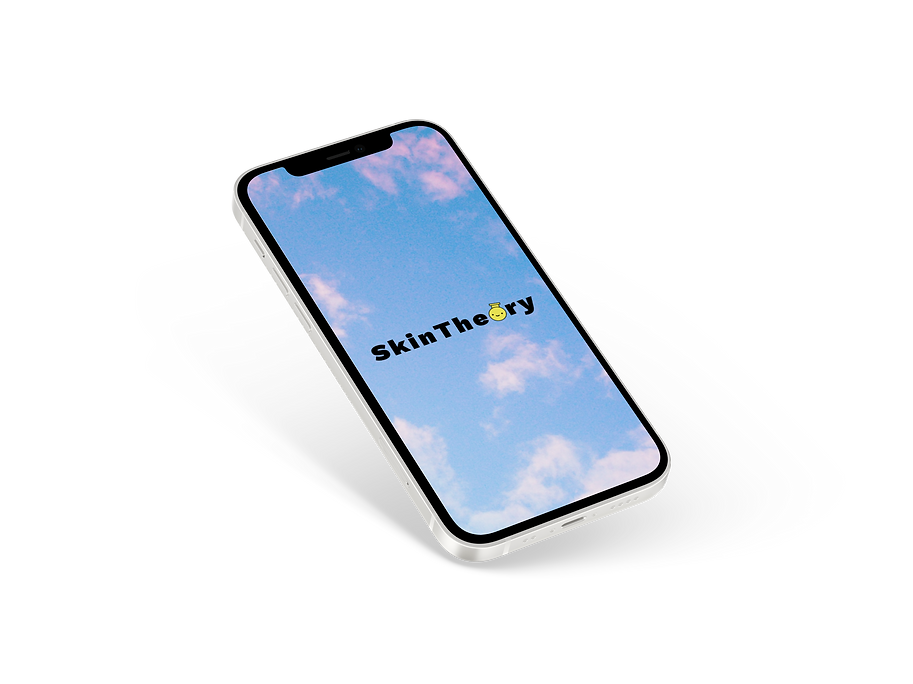
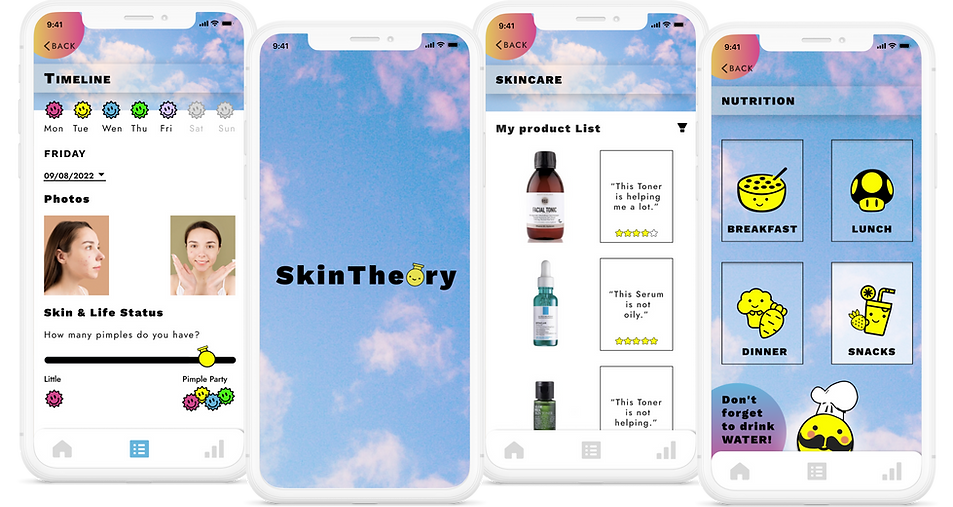
Key Deliverables: Objectives and Strategic Focus
After a meeting with the stakeholders, the following main deliverables were identified.
#1 Improve the daily skincare routine feature
A primary goal was to enhance the daily skincare routine tool, focusing on rethinking how users could interact with and record their daily skincare entries.
#2 Research Insights for Product Improvement
Collect data through interviews and surveys with individuals who experience acne regularly to recommend potential product improvements.
#3 Redesign Proposals for the App
Redesign ideas for the app with a bold, youthful aesthetic inspired by 90s design trends, creating a more engaging and relatable user experience.
Interviews: Insights
Through interviews and surveys with 40 individuals aged 15 to 45 who struggle with acne, the following key insights were identified:
#1 Perceived Main Causes of Acne According to Respondents
51 % of respondents believe acne is caused by hormonal reasons.
45 % attribute it to an excess of oil in the skin (sebum).
51 % think diet plays a significant role.
41 % consider stress to be a primary factor.
#2 Areas Perceived as Beneficial
66 % of respondents would like nutrition tracking to help maintain a healthier diet.
63 % are interested in learning about proper skin cleaning techniques.
56 % believe tracking and establishing a skincare routine would be helpful.
56 % would appreciate reminders to stay hydrated, drink water, or use sunscreen.
#3 Willingness to Receive Information on the Topic
58 % of respondents would like to receive information on the topic.
22 % are open to receiving information.
12 % of respondents do not want to receive any information about it.
Qualitative User Feedback from Acne-Prone Individuals
#1 Need for Educational Content
“A more detailed explanation of what is good for the skin and what is not.”
“Why I get acne, such as nutrition or stress issues, depending on which part of the body I get acne.”
#2 Personalized Tracking and Recommendations
“Keeping track so I can show it to my dermatologist, and having specific results, e.g., tips on which types of food I should eat.”
“That there isn’t any scientifically detailed content like what you get with a dermatologist — evaluations personalised to specific skin types and problems.”
#3 Reminder and Notification Features
“Notifications with reminders/tips because I tend to forget, e.g., use sunscreen, drink water, don’t eat too much dairy/lactose.”
“I would like to receive daily encouragement to keep going.”

Research: Market Trends
Emerging Social Media Trends in Skincare and Beauty
#1 The Rise of Skin Positivity Movements
-
Movements like #AcnePositivity, #FreeThePimple, and #SkinPositivity emphasize that healthy skin does not equate to perfect skin.
-
As a backlash to selfie culture and perfectionism, users are increasingly sharing makeup-free selfies to reduce stigma around skin issues like acne.
-
Social media is fostering a culture of authenticity, self-acceptance, and transparency about skin concerns.
#2 Men’s Skincare and Modern Masculinity
-
#MensSkincare has garnered 104.8M views on TikTok, driven by users sharing content on men’s skincare and grooming.
-
The trend reflects shifting perceptions of modern masculinity, challenging an industry traditionally dominated by femininity.
-
A 2018 study found that 84% of men aged 18 to 44 use some form of skincare, and this figure continues to grow.
#3 Science-Backed Beauty
-
#ScienceBackedBeauty is emerging as a major trend for 2023 and beyond, focusing on products that combine efficacy with mental and emotional support.
-
Consumers are seeking skincare backed by science to deliver proven results, prioritizing trust and innovation.
#4 Sensitive Skin and Inclusivity
-
#SensitiveSkin users are increasingly searching for relatable content and recommendations for products that address their needs.
-
Inclusivity and representation in beauty—addressing various skin concerns and conditions—are becoming critical.
-
Brands that fail to meet these expectations risk alienating consumers.
#5 Air Pollution as a Skincare Concern
-
The World Health Organization (WHO) has identified air pollution as the largest health risk to humans.
-
Pollution is now seen as a significant threat to skin health, comparable to UV rays.
-
41% of facial skincare users believe pollution has the greatest impact on their skin’s appearance.
#6 The No-Make-up Make-up Trend
-
The #NoMakeupMakeupLook is projected to remain popular through 2025, focusing on minimal product routines and natural aesthetics.
-
However, achieving a “no-makeup” look requires robust skincare.
-
By 2025, products offering “stealth cosmetic benefits”—supporting aesthetic manipulation while improving skin health—will be in high demand.
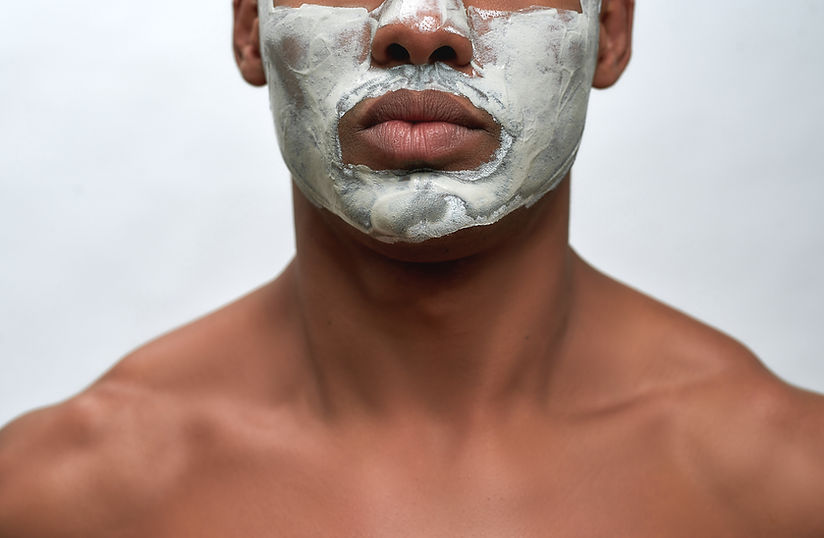
Research: About Acne
#1 How Acne occurs?
Acne occurs when hair follicles (small skin openings) become blocked. Sebaceous glands, which produce an oily substance called sebum to keep skin and hair moisturized, begin producing excess sebum. This excess sebum combines with dead skin cells, forming a plug in the follicle.
-
If the plug is close to the skin's surface, it causes a whitehead.
-
If the plug remains open, it forms a blackhead.
Bacteria on the skin can infect the blocked follicles, leading to inflammation and the formation of papules, pustules, nodules, or cysts.
#2 Acne Severity Categories
-
Mild: Primarily whiteheads and blackheads with a few papules and pustules.
-
Moderate: Widespread whiteheads and blackheads with numerous papules and pustules.
-
Severe: Large, painful papules, pustules, nodules, or cysts, often accompanied by scarring.
#3 Teenage Acne and Hormonal Triggers
In teenagers, acne is often triggered by increased levels of the hormone testosterone during puberty.
-
In boys, testosterone stimulates the growth and development of the penis and testicles.
-
In girls, it helps maintain muscle and bone strength.
The sebaceous glands in the skin are highly sensitive to hormones. Elevated testosterone levels are believed to cause these glands to produce excess sebum (oil), which the skin does not need, leading to acne.
#4 Adult Acne in Women
Women are more likely to experience adult acne than men, often due to changes in hormone levels during specific times:
-
Menstrual cycle: Some women experience acne flare-ups just before their period.
-
Pregnancy: Acne symptoms are common, particularly during the first three months of pregnancy.
-
Polycystic Ovary Syndrome (PCOS): A common condition that can cause acne, weight gain, and small cysts forming in the ovaries.
#5 Other Acne Triggers
Acne flare-ups can also be triggered by:
-
Cosmetic products: Though rare, some products may cause breakouts. Most are now tested to be non-comedogenic (do not clog pores).
-
Certain medications: Examples include steroid medicines, lithium (used for depression and bipolar disorder), and some epilepsy treatments.
-
Pressure on the skin: Regularly wearing items like headbands or backpacks that press against affected areas.
-
Smoking: A contributing factor to acne, particularly in older adults.
-
Genetic Factors: Acne can run in families. If your parents had acne, it increases the likelihood of developing it.
#6 Psychological Impact
Acne can profoundly affect mental health, particularly in teenagers. It often leads to low self-esteem, poor body image, and social withdrawal. Common behaviors include avoiding eye contact, growing hair to hide the face, or using heavy makeup to conceal blemishes. During a crucial time for building relationships, teenagers with acne may struggle with confidence, becoming shy or reclusive. The fear of negative judgment can, in severe cases, develop into social phobia.

Problem Statement
Going through the journey of treating acne can be challenging due to the overwhelming amount of misinformation, especially on the internet. As a result, people affected by acne struggle to find scientifically backed information, making it difficult for them to identify the root cause of their acne and how to treat it properly.
Design Solutions: How might we...?
Based on insights from previous research, the following features and improvements were identified to optimize the product's value:
#1 How might we encourage users to journal daily?
-
Create a timeline feature to help users track and identify potential acne triggers.
-
Design or improve a dashboard to highlight factors that improve skin health.
-
Provide skincare education, offering detailed information about effective skincare routines.
-
Optimize app flow.
-
Include an animated companion guide (e.g., using the SkinTheory Logo) to make it engaging and interactive.
#2 How might we offer personalized guidance on nutrition and wellbeing?
-
Add a diet tracking feature to help users monitor their eating habits and identify possible connections to skin health.
#3 How might we inspire and motivate users daily?
-
Implement daily affirmations to promote positivity and confidence.
-
Provide daily tips focused on skincare, health, and wellbeing.
Design Opportunities: First Ideas
After reviewing the previous usability of the SkinTheory app, it was realized there were opportunities to improve certain features:
#1 Energize the interface color palette and design
The decision was made to refresh the logo and incorporate warmer colors into the app to make it more fun and engaging.


Previous app logo and onboarding version provided by stakeholders.
#2 Assign a different function to the application's avatars for gamification.
Previously, the avatars served as guides during the onboarding process. Moving forward, each avatar will play a more prominent role by representing the various features of the app.
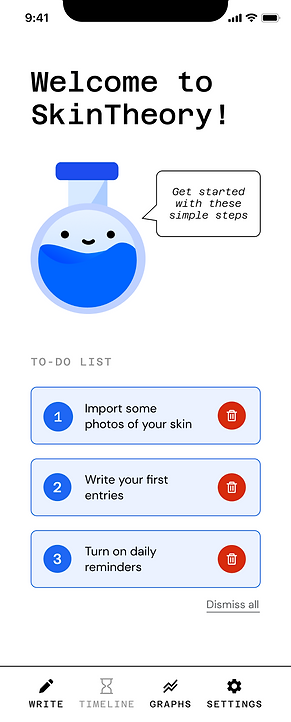

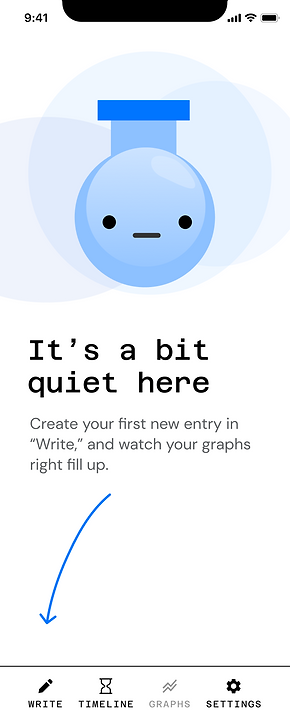
Examples of Previous Avatar Functions in the App.

Initial Sketches and Structural Design for the Avatars.
#3 Differentiate the features of journaling, skincare, nutrition, and wellbeing.
The decision was made to separate the various features. For instance, skincare was moved to its own dedicated section, separate from journaling. Additionally, new sections focusing on nutrition and well-being were introduced, as these factors had not previously been considered in analyzing users' acne conditions. This separation allows for better comparison of different factors in graphs, making it easier to identify potential causes of acne.
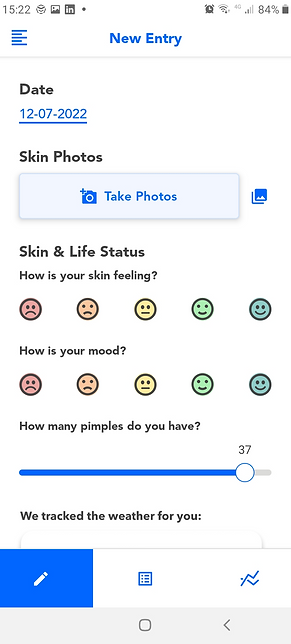

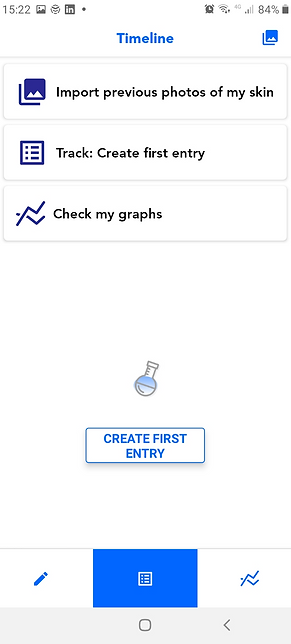

Previous app Journaling and Graphs overview.

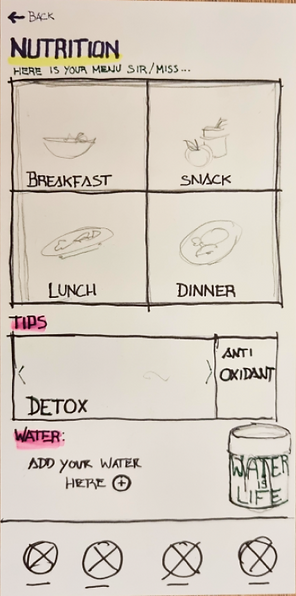
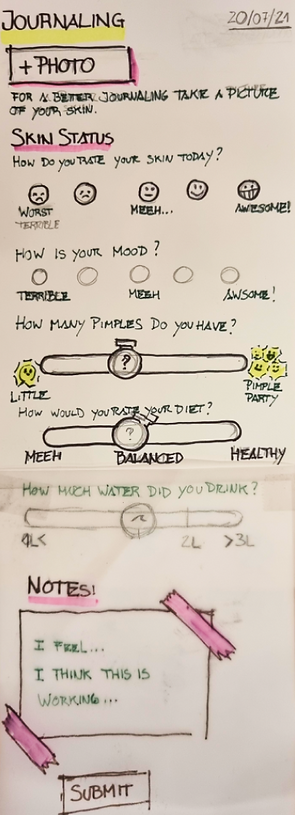
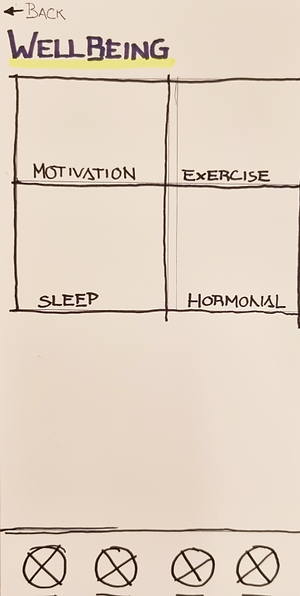
First Sketches of Differentiated Features for the New App.
Design Recommendations: Final Deliverables
Based on a 90s aesthetic, which was trending at the time of design, this concept was shaped and presented to the stakeholders:
#1 Homepage Featuring Multiple Tracking Tools
As previously mentioned, features like journaling, skincare, nutrition, and wellbeing have been separated to improve the effectiveness of tracking potential acne triggers for users. Avatars now represent each section and continue to engage with users by offering advice and motivational messages. This approach aims to gamify SkinTheory.

Redesigned Homepage with Differentiated Features for the Steakholders.
#2 New look of the New Timeline Feature and Graphs
A timeline has been introduced to showcase all entries from daily journaling, accompanied by motivational messages. Additionally, the graphs now allow for the inclusion of various variables, enabling comparisons of acne conditions based on these factors. This functionality is designed to support users in gathering valuable insights to share with their dermatologist.


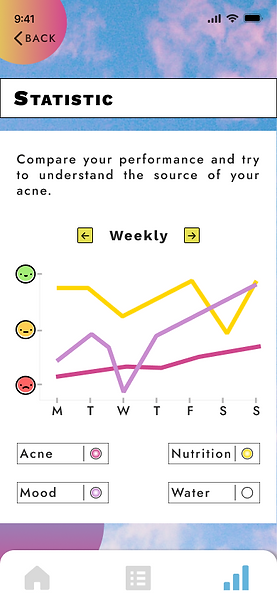
Updated Timeline with Motivational Messages and Graphs.
#3 Upgraded Journaling feature
A timeline has been introduced to showcase all entries from daily journaling, accompanied by motivational messages. Additionally, the graphs now allow for the inclusion of various variables, enabling comparisons of acne conditions based on these factors. This functionality is designed to support users in gathering valuable insights to share with their dermatologist.

Redesigned Journaling Overview.
#4 Skincare routine feature
The Skincare feature is designed to track daily skincare routines and evaluate the cosmetics used regularly. This helps create a personalized list of products that work well for user skin and those that don't. Future updates could include skincare tips, such as how to properly hydrate, cleanse, tone, and protect your skin from the sun.
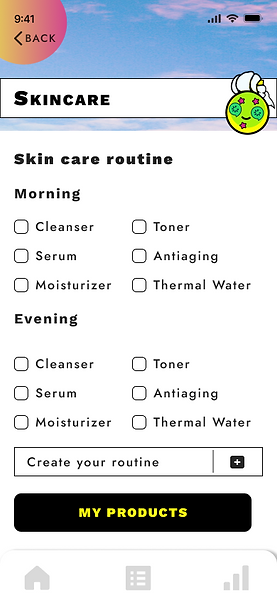
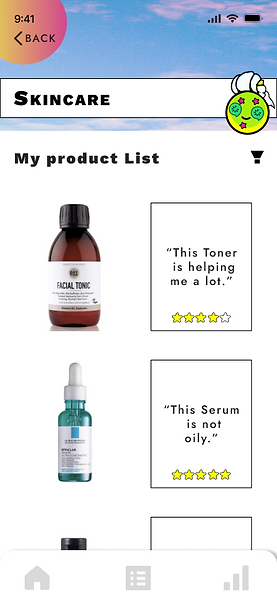
New Skincare Feature.
#5 Nutrition feature
The Nutrition feature focuses on promoting a healthy diet and reminding users to stay hydrated, as food tracking is already covered in the Journaling feature. It provides tips and recipes for cleaner, healthier eating, encouraging users to adopt better dietary habits that positively impact their skin health.
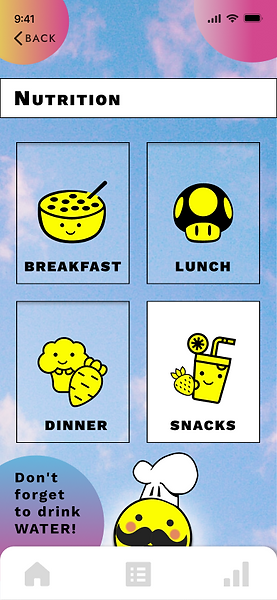
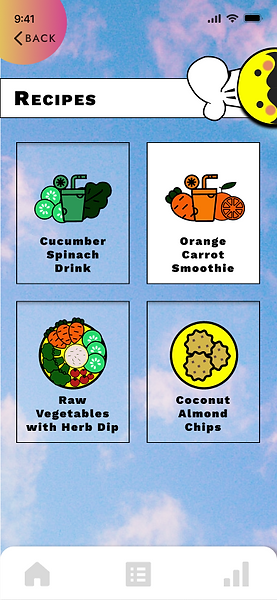
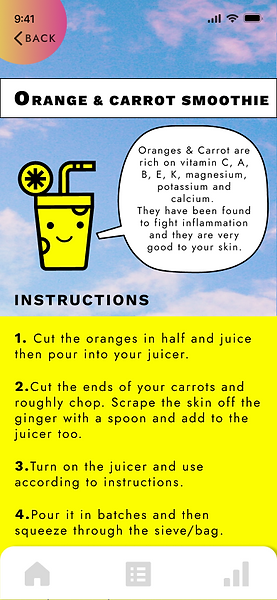
New Nutritional Education Feature.
#6 Emotional Wellbeing, Motivation & Menthal Health
The Wellbeing feature aims to support the user's mental health and encourage them to embrace acne in a positive and non-traumatic way. It focuses on fostering self-acceptance while educating users about how activities like exercise and quality rest can improve their skin health. It also addresses the impact of hormonal changes, such as those during menstruation, reassuring users that their skin will improve over time. Additionally, the feature includes cute daily affirmations to motivate users to maintain their skincare routine and embrace their acne with confidence.


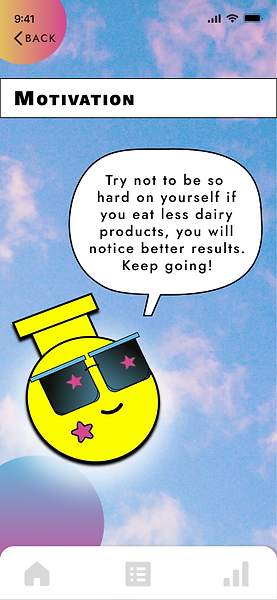
New Emotional Wellbeing, Motivation & Daily affirmation Feature for a better Menthal Health.
#7 Daily Reminders & Alarms
The option for alarms and reminders has also been added to help users stay on track. Consistency is key, as it delivers the best results for acne care.
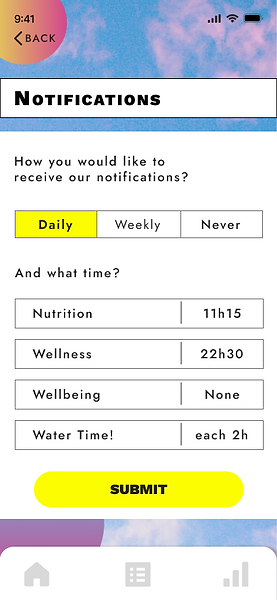
Daily Reminders & Alarm Settings.
Retrospective and Takeaways: Final Thoughts
Although the project was short and time for further design improvements was limited, we conducted a solid an effective UX research that identified key opportunities for improving the product. Users were highly engaged and eager to share the support they needed while dealing with acne. A crucial insight, which stakeholders appreciated, was that the focus shouldn't be solely on journaling and improving skincare. There was significant potential in incorporating information about nutrition and, most importantly, addressing users' wellbeing and mental health.
As a designer, my main takeaway from this first professional UX/UI project has been having my first real interaction with a stakeholder to understand the product I am working on and the actual needs of the potential user through the research conducted. Additionally, I have learned to reach design agreements with other designers, considering each one's approach, so that everyone contributes their part and is satisfied with the final design.